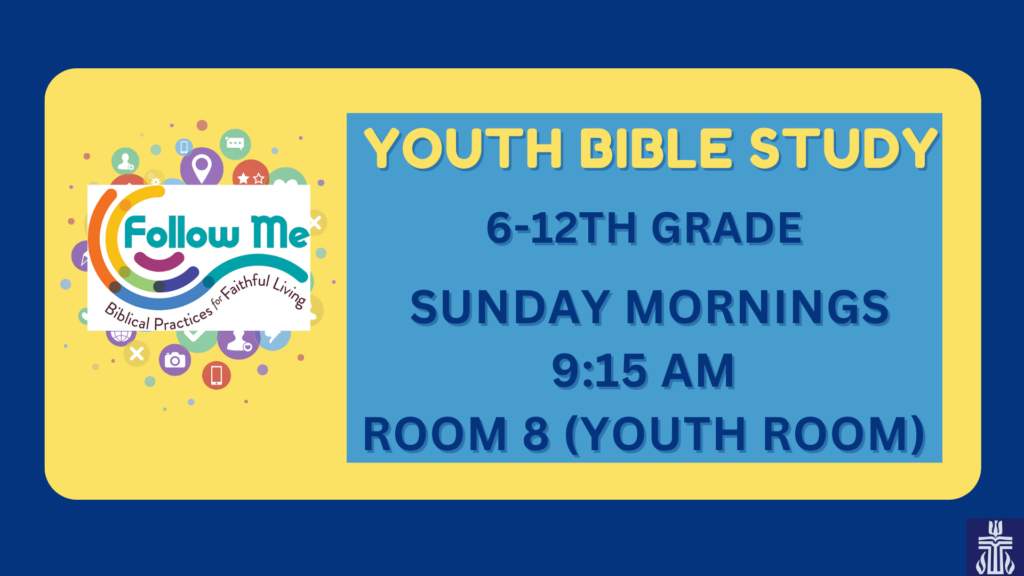“There was a man who had two sons.” It is such a familiar story to us that it is at once both easy and hard to hear. Barbara Brown Taylor explains it this way:
The problem with a really good parable—especially one as beloved as this one—is that it can become limp from too much handling. Like the velveteen rabbit, it can lose its eyes, its whiskers, and a lot of its stuffing, until it conforms to the arms of whoever picks it up. After a while, you hardly have to hold it anymore. You can just sling it over your wrist, with the head on one side and the body on the other, trusting it to stay put while you go about your business. That’s how you know you don’t have a live parable anymore, capable of leaping from your arms and leading you out to where you did not mean to go. You have a domestic pet instead, as captive to you as you are to your culture[i].
Parables were meant to illustrate for the people of Jesus’ day of what the kingdom of God was like. Jesus used this storytelling technique like a masterful artist, inviting those who would hear to listen, and find their place in the story. We might then, apply techniques of studying and appreciating art to the complexity of these illustrations from Christ. And that is exactly what Henri Nouwen did with a seventeenth-century painting of this parable by Rembrandt titled Prodigal Son. [show picture of painting]
Nouwen, a Dutch Catholic priest, professor, theologian and writer with a passion for social justice and community, particularly those who were developmentally challenged. In the 1980s, following an exhausting lecturing trip, Nouwen noticed a poster of the painting pinned to the door. He describes it like this:
I could not take my eyes away. I felt drawn by the intimacy between the two figures, the warm red of the man’s cloak, the golden yellow of the boy’s tunic, and the mysterious light engulfing them both. . . My heart leapt when I saw it. After my long self-exposing journey, the tender embrace of father and son expressed everything I desired at that moment[ii].
Three years later, Nouwen found a way to travel to Russia, where the original painting was on display at the Hermitage in Saint Petersburg. He was not disappointed, and describes sitting for hours with the painting, even as others came and went, spending different days examining it from different angles. As time unfolded, he continued to be enraptured by this painting, and the many layers of meaning for both the artistry, and the parable it depicted. It became a reflecting point for Nouwen, which inspired him to write an amazing little book titled The Return of the Prodigal Son, which I want to offer as our guide this morning as I borrow heavily from his reflections[iii]. Perhaps by seeing the story through his eyes instead of our own, we might just notice something new. Perhaps we can find ourselves painted into this story as well.
First, let’s take a look at the younger son. We, of course, have plenty of words to judgmentally describe him, don’t we? He is arrogant, selfish, foolhardy, immature, and short-sighted. Here, though, we see the prodigal in a different light:
The soft yellow-brown of the son’s underclothes looks beautiful when seen in the rich harmony with the red of the father’s cloak, but the truth of the matter is that the son is dressed in rags that betray the great misery that lies behind him[iv].
The full title of this painting is The Return of the Prodigal Son. For Rembrandt, and Nouwen, the beauty comes in this moment of embrace from the middle of the story in verse 20. Nouwen writes:
In the context of a compassionate embrace, our brokenness may appear beautiful, but our brokenness has no other beauty but the beauty that comes from the compassion that surrounds it[v].
He goes on to describe this compassion as a mystery, for the youngest son has done virtually everything in the world to do the opposite of deserving such love. His asking for his inheritance in advances was tantamount to wishing his father dead. And yet, even when all becomes lost, he is able to find a way home.
Nouwen describes himself as the youngest child, who stumbles, humbly, into the arms of God. He writes:
For most of my life I have struggled to find God, to know God, to love God. I have tried hard to follow the guidelines of the spiritual life – pray always, work for others, read the Scriptures – and to avoid the many temptations to dissipate myself. I have failed many times but always tried again, even when I was close to despair.
Now I wonder whether I have sufficiently realized that during all this time, God has been trying to find me, to know me, and to love me. The question is not “How am I to find God?” but “How am I to let myself be known to God?” And, finally, the question is not “How am I to love God?” but “How am I to let myself be loved by God?”[vi]
The return of the son is often the focus of our readings, but as Nouwen notes, his journey cannot be separated from the one of his older brother. The painting by Rembrandt is peculiar in its telling of the story, in that in the story the moment it describes would have the older brother still in the fields. He does not witness this embrace and welcome. Rather, he returns from a hard day of work to find a lavish party for his brother already in full swing. And yet, Rembrandt paints him into this moment, a stern onlooker. In doing so, he adhered to the dualistic pattern of the bible commentaries and paintings in his time, presenting the dichotomy of these two brothers on full display.
In contrast to the open embrace before him, the elder brother is painted with hands clasped. His expression is stern. His presence helps us not to make this just a “happy ending” story because with him it is no longer possible to sentimentalize the “return.” It reminds us that there is more to come; a painful encounter with the realities of resentment and bitterness for one who strove to live into all expectations of obedience and duty. The one who longs to cry out “it’s just not fair!”
Nouwen, along with many other biblical commentators, argue that this story can perhaps be best described as the story of two lost sons, for the older son is also lost, even though he has stayed at home. The older son confronts us:
With one of life’s hardest spiritual choices: to trust or not to trust in God’s all-forgiving love[vii].
His presence and the tension of these moments remind us that trust is most certainly not easy or even natural.
Nouwen, a self-acknowledged oldest child, wrestled with these challenges, saying:
The more I reflect on the elder son in me, the more I realize how deeply rooted this form of lostness really is and how hard it is to return home from there. Returning home from a lustful escapade seems so much easier than returning home from a cold anger that has rooted itself in the deepest corners of my being. My resentment is not something that can be easily distinguished and dealt with rationally[viii].
There is a very strong, dark voice in me that says the opposite: “God isn’t really interested in me, he prefers the repentant sinner who comes home after his wild escapades. He doesn’t pay attention to me who has never left the house. He takes me for granted. I am not his favorite son. I don’t expect him to give me what I really want[ix].”
The story gives us a follow-up conversation between the farther and the older son, but the true ending is left open. So it is true with the painting, too. The light in the painting finds rest on both brothers, perhaps suggesting Rembrandt’s hope that there is a return for the older son as well. Nouwen suggests:
Trust and gratitude are the disciplines for the conversion of the elder son. . . Trust is that deep inner conviction that the Father wants me home. . . I have to keep saying to myself “God is looking for you. He will go anywhere to find you. He loves you, he wants you home, he cannot rest unless he has you with him.[x]”
One of my favorite lines from all of our confessions is in the Brief Statement of Faith, which we will say together today. It says:
Like a mother who will not forsake her nursing child,
like a father who runs to welcome the prodigal home,
God is faithful still.
Some suggest that this parable and painting could instead be titled “The Welcome by the Compassionate Father,” or the “Parable of the Father’s Love.” I’ve even heard it suggested that this is the parable of the “prodigal father,” for the grace and love shown by the father is equally reckless and extravagant. Nouwen notes:
Looking at the way in which Rembrandt portrays the father, there came to me a whole new interior understanding of tenderness, mercy, and forgiveness. Seldom, if ever, has God’s immense, compassionate love been expressed in such a poignant way. Every detail of the father’s figure – his facial expression, his posture, the colors of his dress, and, most of all, the still gesture of his hands – speaks of the divine love for humanity that existed from the beginning and ever will be . . . What gives Rembrandt’s portrayal of the father such an irresistible power is that the most divine is captured in the most human[xi].
In the father, of course, we see the love of God. Nouwen writes:
Here is the God I want to believe in: a Father who, from the beginning of creation, has stretched out his arms in merciful blessing, never forcing himself on anyone, but always waiting; never letting his arms drop down in despair, but always hoping that his children will return so that he can speak words of love to them and let his tired arms rest on their shoulders. His only desire is to bless[xii].
The true center of the painting is on the hands of the father; hands extended and open, ready to embrace and bless.
It is dangerous, and uncommon, to paint ourselves in as the father. But Nouwen provokes us to consider the possibility. Not that we might become God, but that we might extend the same compassion and blessing to others. He notes:
Having lived my sonship to its fullest, the time has come to step over all barriers and claim the truth that becoming the old man in front of me is all I really desire for myself[xiii].
Isn’t that our truest desire as Christians? To become, more and more, like Christ – God incarnate – who calls us to love as he loves?
This parable paints a powerful picture. So did Rembrandt. Might we dare to find that we ourselves are in it as well, as a part of this complex and ever-changing story of return and God’s grace. Henri Nouwen noted that this painting, this parable, was a tremendous part of his journey that led him to a profound understanding of his own call, and enabled him to reflect on different parts of his life. He notes appreciation for Rembrandt, whose intricate work enabled him to imagine himself in multiple places in the scene and story, and expresses that hope to his readers, and by proxy, to us today. I leave you with how he concludes his introduction, noting his intentions for this reflection. He writes:
For, indeed, I am the younger son; I am the elder son; and I am on my way to becoming the father. And for you who will make this spiritual journey with me, I hope and pray that you too will discover within yourselves not only the lost children of God, but also the compassionate mother and father that is God[xiv].
May we find such a place in God’s picture of our lives. Amen.
~Sermon by Rev. Elizabeth Lovell Milford, Heritage Presbyterian Church, March 31, 2019
________________________________________________________________________________________________
[i] Barbara Brown Taylor, “The Parable of the Dysfunctional Family,” sermon preached at Fourth Presbyterian Church, Chicago, Illinois, on March 18, 2017. http://www.fourthchurch.org/sermons/2007/031807.html, accessed 3/27/2019.
[ii] Nouwen, 4-5.
[iii] Henri J.M. Nouwen, The Return of the Prodigal Son, (New York, NY: Doubleday Publishing, 1992).
[iv] Nouwen, 35.
[v] Nouwen, 35.
[vi] As quoted in Words that Listen
[vii] Nouwen 75
[viii] Nouwen 75
[ix] Nouwen, 84.
[x] Nouwen, 84.
[xi] Nouwen, 93.
[xii] Nouwen, 95-96.
[xiii] Nouwen, 124.
[xiv] Nouwen, 23.




Leave a Reply
You must be logged in to post a comment.